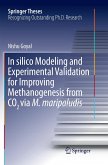Enzymatic catalysis has gained considerable attention in recent years as an efficient tool in the preparation of natural products, pharmaceuticals, fine chemicals, and food ingredients. The high selectivity and mild reaction con- tions associated with enzymatic transformations have made this approach an attractive alternative in the synthesis of complex bioactive compounds, which are often difficult to obtain by standard chemical routes. However, the maj- ity of organic compounds are not very soluble in water, which was traditi- ally perceived as the only suitable reaction medium for the application of biocatalysts. The realization that most enzymes can function perfectly well under nearly anhydrous conditions and, in addition, display a number of useful properties, e. g. , highly enhanced stability and different selectivity, has d- matically widened the scope of their application to the organic synthesis. Another great attraction of using organic solvents rather than water as a reaction solvent is the ability to perform synthetic transformations with re- tively inexpensive hydrolytic enzymes. It is worth reminding the reader that in vivo, the synthetic and hydrolytic pathways are catalyzed by different enzymes. However, elimination of water from the reaction mixture enables the "reversal" of hydrolytic enzymes and thus avoids the use of the expensive cofactors or activated substrates that are required for their synthetic count- parts.
Hinweis: Dieser Artikel kann nur an eine deutsche Lieferadresse ausgeliefert werden.
Hinweis: Dieser Artikel kann nur an eine deutsche Lieferadresse ausgeliefert werden.
"The handbook provides detailed descriptions of a variety of methods used for performing enzymatic reactions in nonaqueous media." - Journal of the American Chemical Society
"...includes detailed descriptions of the latest technologies used for biocatalysis in nearly anhydrous systems. Numerous specific enzymatic reactions, bioreactors, and useful techniques are carefully explained in a format intelligible to most readers in spite of the great diversity of the fields covered. This work of reference will be extremely valuable to those interested in enzymatic and asymmetric synthesis." - Natural Products Reports
"...includes detailed descriptions of the latest technologies used for biocatalysis in nearly anhydrous systems. Numerous specific enzymatic reactions, bioreactors, and useful techniques are carefully explained in a format intelligible to most readers in spite of the great diversity of the fields covered. This work of reference will be extremely valuable to those interested in enzymatic and asymmetric synthesis." - Natural Products Reports








